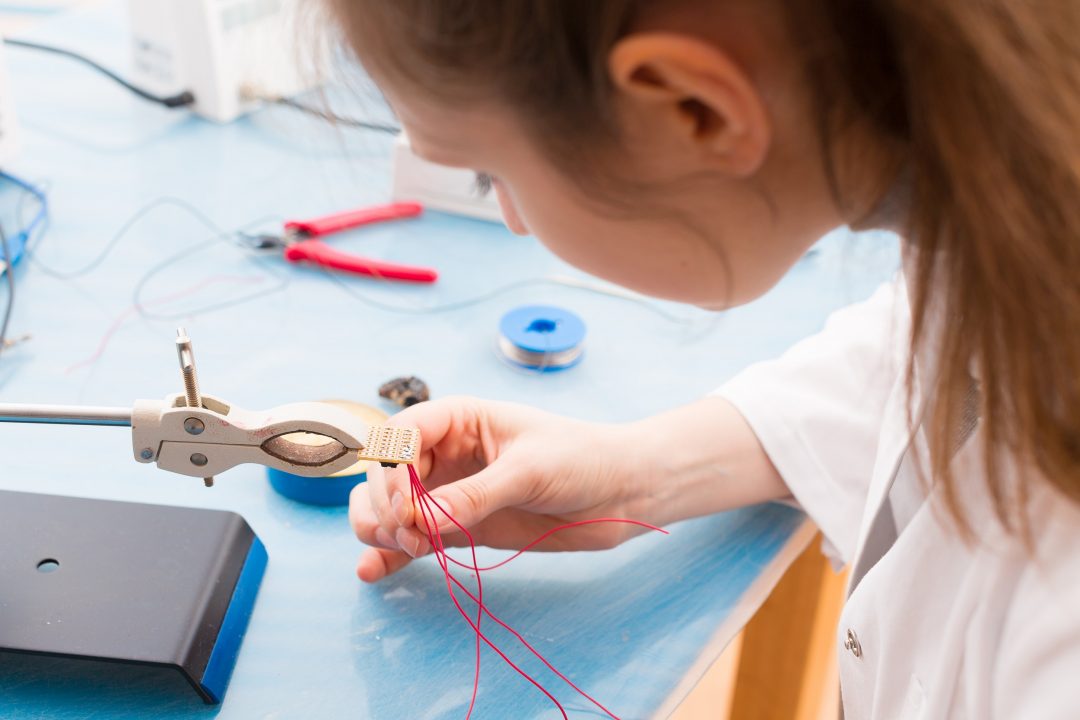Search this site
Adhesives and Surface Preparation as Part of Your Design

Adhesives rarely fail; Consider your surface preparation
Because adhesives are capable of achieving greater functionality and production improvements, hardware and assembly companies are rapidly replacing traditional fasteners and hardware with adhesive systems.
For example, some adhesive joints not only bond mechanically, but they can also help transfer heat and conduct electricity – game-changers in considering a design’s heat dissipation or stress mitigation.
To achieve optimal adhesive bonding and structural performance, you need to consider three factors:
- Achieving, and surpassing, a design’s requirements by specifying the chemical and physical characteristics of the adhesive
- Proper joint design and bond line thickness
- The preparation of bonding surfaces, whether similar or totally different
This article will discuss surface preparation methods and processes for getting the most from your adhesive application.
Adhesives open opportunities to bond dissimilar materials. Ensuring the bonded surface of these materials (the substrates) is optimized is as important to the product’s design as any other aspect.
Major Process and Design Considerations
Cleanliness
Cleanliness is often taken for granted by design and process engineers. But surface preparation, a poorly understood requirement, is often a key failure mode affecting bonding and reliability. Not taking the time to determine the quantitative requirements for cleanliness can cost a company significant money in recalls, field failures, loss of sales, and damage to your brand.
Cleanliness should be determined using design tools, hands-on practical, quantitative, qualitative, and reliability methods – all of which lead to documenting this critical aspect of the design in product or process specifications.
Some typical methods for ensuring cleanliness are:
Surfactants cleaning and deionized water rinsing: If substrates can tolerate deionized water (e.g., not corrode), the use of surfactants and deionized water rinsing is an economical and ecological approach.
This method usually requires attention to bath quality and loading over time, ultrasonic frequency, deionized water resistivity, and hot clean air drying (optional is water spots are a concern). But all of these factors can be managed with regular maintenance.
Solvent cleaning: While Isopropyl Alcohol (Proponal-2, IPA) is the most common solvent, acetone, and other non-fluorocarbon degreasers can be used. For large surfaces, a solvent wipe is typical using a cleanroom, lint-free wipe to mechanically remove debris and the solvent to suspend and dissolve the organic contamination.
Most solvents’ residue will evaporate. Solvents can also be used in tanks, or heated and used with ultrasonic generators. As with aqueous solutions, loading of solvent baths with contamination must be carefully considered and managed.
Managing the vapor (VOC – Volatile Organic Compounds) usually requires negative pressure venting, hoods, and potentially vapor “scrubbing” to be compliant with local laws. Also, most solvents must be disposed of according to local laws.
Non-contact plasma etching: Plasma etching has two variants: isotropic (random) and anisotropic (directional). Both work in similar ways, in that a vacuum is achieved by pumping down a chamber, an inert gas (O2, CF4) is introduced, and a plasma (a fully ionized gas of low density, containing approximately equal numbers of positive and negative ions), is created to react with targeted materials.
This article does not deal with plasma physics beyond that isotropic can handle non-flat geometries in larger chambers and anisotropic is usually limited in height of substrates because of the required proximity electrodes in the chamber.
Instead, we want to introduce plasma etching as an excellent means of surface preparation for adhesive bonding, particularly when very small amounts of contamination have a disproportionate impact on performance.
Often, plasma etches are the last operation done to substrates after traditional cleaning is completed and just before application of the adhesive and bonding. The drawbacks associated with plasma etching are process windows (usually requires immediate application) and capital costs.
Surface Finishes and Physical Micro-Geometry
When completing failure analysis, most experienced adhesive engineers will immediately assess cleaning methods. The next area to assess is surface finish, roughness, and geometry. Optimal adhesive bonding and strength requires wetting and maximized surface area.
Wetting is the tendency of an adhesive to flow and cover a surface to maximize the contact area and the attractive forces between the adhesive and bonding surface.
Maximizing surface area is a process that increases the surface profile or micro-features in a surface; for example, creating lots of little peaks and valleys. Typical ways of creating surface finishes are:
Etching: Etching provides two helpful factors — micro-features enlarged by the etchant (acids and bases) and cleanliness as a by-product.
Etching can exploit weaknesses in a material; for example, grain boundaries in aluminum, or act in a more uniform roughening as on glass and ceramics. In metals, etching can leave surfaces quite reactive and prone to corrosion, requiring almost immediate processing.
Etching with conversion coatings: “Chromate” and “anodizing” are called conversion coatings because they require an initial etch to prepare materials for a subsequent coating, which chemically bonds to the underlying material, eliminating the chance for corrosion.
These common preparations are robust, typically insensitive to storage conditions, and provide excellent wetting and optimized surface area. These processes can be prone to entrapped contamination and organics if the process is not managed. But with military grade or medical device grade processing facilities, this is rarely an issue.
Primers: Primers, also called adhesion promoters or chemical bridges, function as a bonding layer between the substrate and the adhesive, and improve the adhesion. They are used mainly on surfaces that are difficult to bond or in applications with very high demands regarding resistance against moisture and heat.
Abrasive and bead blasting: For some non-reactive materials, such as certain types of stainless and super alloys, alternatives to traditional etches include abrasive and bead blasting. These processes differ in important ways:
-
- Abrasive media (Garnet, Ceramics) is sharp and very hard, typically removes material, and creates very peaky surface geometries. Also, the hard media might imbed itself in the substrate, causing larger artifacts (boulders) in thin bond line applications.
- Glass bead media burnishes the surface, creating less peaky features; the glass beads “wear out” and become less effective, as they break on impact. Maintenance and replacement of the media is critical for surface finish predictability and repeatability over production runs. But the media, since it’s sacrificed and shatters, is less prone to embedding.
Appli-Tec removes surface prep complexity and aggravation
Adhesives require expertise, awareness, and a willingness to consider and control for unknowns, including locking down a design’s requirements and process controls when discovered.
Appli-Tec has a long history of working with customers on their designed-in material systems to improve yield, consistency, performance, reliability, and to eliminate excessive waste. To discuss your application, contact us.
New Applications
I want to discuss my application challenges, order samples, or place a first-time order.
Existing Applications
I need to reorder an existing part number, I have a BOM/Spec.

